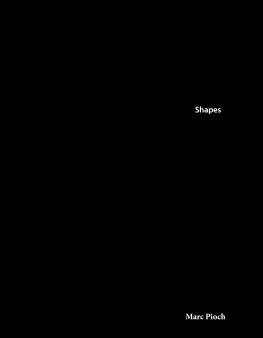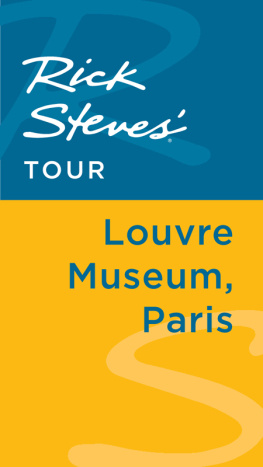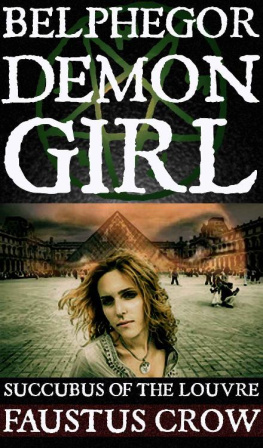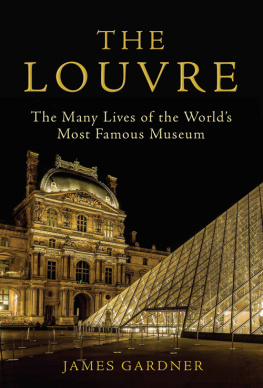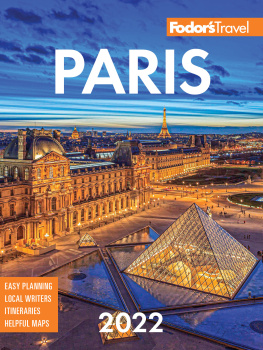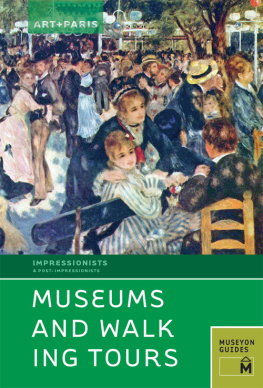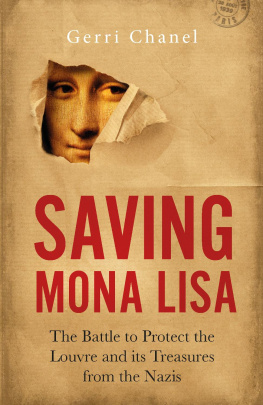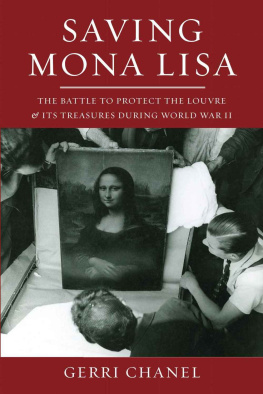Michel Laclotte
ABBEVILLE PRESS PUBLISHERS
NEW YORK LONDON
For their help and friendship, the author wishes to thank
Laurence Bertrand-Dorlac, Genevive Bresc-Bautier, Genevive Bouflet,
Marie-Anne Dupuy-Vachey, Caroline Mathieu, Claudie Ressort,
Paul Salmona, and Philippe Snchal.
Editions Scala particularly wishes to thank Mijo Thomas and Jean Clay.
This text is based on interviews conducted by Franois Legrand,
as rewritten by Michel Laclotte in collaboration with Anne Sefrioui.
First published in the United States of America in 2004 by Abbeville Press,
137 Varick Street, New York, NY 10013.
First published in France in 2003 by ditions Scala, Passage Lhomme,
26 rue de Charonne, 75011 Paris, France. Copyright ditions Scala, 2003
Photography Credits
Runion des Muses Nationaux, Paris / Art Resource, New York:
inserted pages, Georges de La Tour, The Cheat (photo: Gerard Blot);
Giovanni Bellini, The Drunkenness of Noah (photo: Herv Lewandowski);
and Jean-Honor Fragonard, The Bolt (photo: Daniel Arnaudet)
All rights reserved under international copyright conventions. No part of this book may be
reproduced or utilized in any form or by any means, electronic or mechanical, including
photocopying, recording, or by any information storage and retrieval system, without permission
in writing from the publisher. Inquiries should be addressed to Abbeville Press,
137 Varick Street, New York, NY 10013.
First E-book edition: April 2012
E-book ISBN: 978-0-7892-6007-9
The print edition of this book is cataloged as follows:
Library of Congress Cataloging-in-Publication Data
Laclotte, Michel.
[Histoires de muses. English]
A Key to the Louvre : memoirs of a curator / Michel Laclotte ;
translated from the French by Mark Polizzotti.
p. cm.
Translation of: Histoires de muses.
Includes index.
isbn 0-7892-0820-2 (hc) isbn 0-7892-0821-0 (pbk.)
(alk. paper)
1. Laclotte, Michel. 2. Museum curatorsFranceBiography. 3. Muse du Louvre.
4. MuseumsFranceHistory20th century. I. Title.
N2030.L17413 2004
708.4361dc22 2004052817
Editor: Christopher Lyon Designer: Misha Beletsky Compositor: Angela Taormna
For bulk and premium sales and for text adoption procedures, write to Customer Service Manager,
Abbeville Press, 137 Varick Street, New York, NY 10013, or call 1-800-A RTBOOK .
Visit Abbeville Press online at www.abbeville.com
For
Jean Coural
Contents
List of Plates
Foreword
Any narrative written in the first person, unless it is fiction or the musings of a confirmed flagellant, contains a share of self-congratulation. I have tried to keep this to a minimum by relating what I personally observed in museums and in the field of art history in France over the last fifty years.
In many respects, my story is the rather banal reflection of what many Frenchmen of my generation experienced in the milieus in which I worked. At the same time, I cannot let it be forgotten that throughout my long career, I benefited from a rare opportunity: having been promoted in my youth through the generosity of an exceptional boss and after that being involved at the right time in undertakings such as are rarely seen in the history of museums.
It is not my intent in this memoir to speak as a professional historian. This book was written from interviews that draw upon personal recollections, with limited recourse to documentary sources in verifying dates, titles, or quotations. In other words, it presents an inevitably partial viewpoint. Many facts relating to these stories have therefore remained unspoken, generally because I didnt know, remember, or correctly interpret them. On top of which, needless to say, I was not able to mention everyone Ive encountered during the past half-century. My hope is that those who could not be cited here will forgive me.
1
 Learning the Trade
Learning the TradeF ifty years of my life have been devoted to art history and museums, and it would be natural to expect a detailed accounting of those decades. But for me to provide one, I would have to adopt the approach of a professional historian, which I am not, on top of which I lack the necessary perspective. Were you to ask my contemporaries about events in our field over the past half-century, their accounts would certainly differ from mine. Rather, what I hope to do in this book is to recreate a sense of the times and to spotlight both the high points in the history of museums (their resurgence after World War II, for instance, or the boom in large-scale construction projects) and the low pointsaround 1970 and perhaps today. And also (though here again my own view is partial and even a bit biased), I hope to highlight the efforts made, after the gray and timid period that followed the war, to revive art history and scholarship in France, the battles won and lost, and finally the vitality of a discipline that not everyone looks upon favorably.
I was born in 1929 in Saint-Malo and, like any good native of that city, was naively proud of my hometown. The fact that so many Malouins have lent their names to streets, hospitals, islands, and even a commercial temple of information technology is not bad for a place whose area, as Chateaubriand put it in his Mmoires doutre-tombe , does not even rival that of the Tuileries. I have always retained my attachment to the city, so much so that I recently bought an apartment there, within the walls, to enjoy the sea air from time to time.
My family left Saint-Malo after my father was killed in 1940, and the following year we settled in Paris. Filtered as they are through our familys mourning, my memories of the Occupation are naturally rather dark: Germans everywhere, soldiers in the metro stinking of leather and heavy wool... My secondary school was the Lyce Pasteur in Neuilly. One teacher who stood out in particular was Henri Petiot, better known as the writer Daniel-Rops, who would soon become famous as the author of Jesus and His Times . When teaching history, he made frequent reference to the history of art, which was ignored or neglected in schools at the time (is it very different today?), and he took us to Notre Dame cathedral to help us understand the Middle Ages.
Like all children, I read avidly in those years, starting with bland scouting books and adventure stories, comics featuring the disastrous housemaid Bcassine (another Breton contribution), as well as The Jungle Book , Jules Verne, Dumas, and many other titles in the white Collection Nelson editionsthe paperbacks of that periodwhich I found in the family library. And, like anyone else, I studied the classics in school: Balzac, Stendhal, Flaubert, the Russians, and so on.
Paris during the Occupation was extraordinarily rich when it came to shows. Id had little experience with theater before the war, though I do remember LHeure espagnole at the Thtre de Rennes, where, of course, I was more taken with the heroines burlesque misadventures than I was with Ravels music. In Paris, while visiting my grandmother, Id seen Around the World in Eighty Days at the Chtelet andpropheticallya ballet by Lifar at the Opera, Entre deux rondes , in which statues in the Louvre came to life at night.
I spent a lot of time at the theater in Paris with my mother or some friends. It was there I saw Henry de Montherlants


